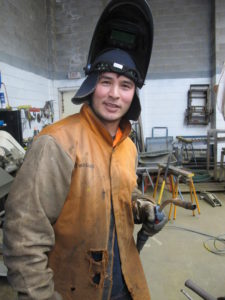Refugees and welfare: the facts
Refugees need more time to establish themselves in the workforce because of the circumstances they have come form, a raft of new research shows.
And, given time, most are able to get off welfare, the research shows.
But new data also shows the actual number of refugees receiving benefits payments is comparatively low compared to the rest of those on welfare.
 The latest Department of Social Security figures show that during March 2017, around four per cent of those receiving payments such as Newstart, Parenting Payment, Youth Allowance, Carers Payment and the Disability Support Pension were refugees.
The latest Department of Social Security figures show that during March 2017, around four per cent of those receiving payments such as Newstart, Parenting Payment, Youth Allowance, Carers Payment and the Disability Support Pension were refugees.
But there were just 103,487 refugees on these welfare payments, compared to the total of 2.5 million people on those of working age benefits.
Experts say refugees may be over-represented among the welfare population when compared to those working but this is because of their particular circumstances.
Australian National University researcher Professor Peter Whiteford says on an analysis of the 132,400 arrivals between 2002 and 2011, refugees on welfare may be over-represented by more than four to one as a proportion of the working age population.
But he argues this isn’t be a reason to not take in refugees, and the over-representation is not surprising given refugees are not selected on the basis of skills like other migrants.
“All the international evidence is that they will not be as successful in the labour market as those who were selected to enter a country on the basis of their skills,” said Professor Whiteford of the ANU’s Crawford School of Public Policy.
“But this is not the reason why they are taken – which is to meet international obligations and because they were in danger,” he said.
The data, from the Department of Social Services, also provides a snapshot of the time refugees spend on working-age payments before finding jobs.
It shows almost half of those looking for work in the first year eventually leave Newstart payments after five years.
There were almost 33,000 refugees on unemployment benefits one year after they arrived, but that drops to 21,165 three years into their new lives.
It drops even further five years after their arrival, with just 16,895 of them remaining on Newstart.
However, the trend is reversed when it comes to claims on the Disability Support Pension (DSP) and the Carers Payment.
One year after arriving, 1,750 refugees claimed the DSP. That more than doubles to 4,197 after three years, while after five it jumps to 5,673 claiming the pension. The data relates to refugees who arrived between 2002 and 2011.
Professor Whiteford said receipt of the disability support pension increases with age, and the assessment takes more time than for Newstart.
“So it is not unexpected that there will be an increase over time in the number on DSP,” he said.
“Also some people will acquire a disability after they arrive in Australia as a result of accident or disease and will receive DSP some years after they arrive.”
The Department also provides statistics on recipients of welfare payments by country of their birth.
When it comes to the dole, those born in Australia are the biggest recipients of Newstart, followed by those born in the UK, Vietnam, and then New Zealand.
But this is representative of proportional sizes of the migrant cohorts.
People born in the UK were also the biggest recipients of the disability support pension besides Australian-born recipients, at 30,863 of the 764,960 total. This is followed by New Zealand-born and Vietnamese-born recipients.
The Department said it’s expected that refugees have poorer employment outcomes than other migrants in the early years of settlement, whether due to a lack of English language proficiency or work experience, or poor health.
“However, this improves over time by learning English and participating in the Australian community,” the department said.
“Helping humanitarian entrants find employment is a priority for Government, as this not only improves their quality of life but reduces the number of people on welfare.”
Agencies that help refugees settle say that despite high levels of motivation to find work, securing jobs soon after arrival can be difficult.
AMES Australia CEO Cath Scarth said barriers to securing employment included English language, skills and qualification recognition and a lack of local experience.
Laurie Nowell
AMES Australia Senior Journalist












